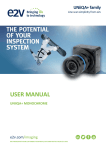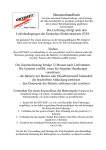Download Operating Instructions “AKKUTEC” (NBPA 2440
Transcript
P33G1D02-050202.doc Operating Instructions “AKKUTEC” (NBPA 2440-P33G1) Placing in operation and maintenance only by suitably qualified personnel! The operating instructions are to be read prior to usage or installation of the AKKUTEC, the information given is to be observed! In the case of failure to observe the information given, all rights under the warranty may be lost! Safety Instructions ♦ Power supply for protection class I and enclosure rating IP20. Operation only in dry rooms ♦ Observe applicable VDE regulations, in particular VDE 0100 and EN 60204! ♦ The surrounding air temperature range is to be observed! ♦ To prevent overload of the DC output circuit, the circuit is to be protected externally with a fuse! (Value see Section 3.1) ♦ Only the battery types specified for the unit are permitted to be used! ♦ Battery replacement is only to be made with the unit unpowered! (See Section 10) ♦ On the connection of external backup batteries, battery protection must be provided by the user! In this case the protection components (overload and short circuit protection!) must be installed as close as possible to the set of batteries for safety reasons ♦ On the usage of batteries, sufficient air flow in accordance with VDE 0510, part 2 must be ensured. ♦ Never connect together new and used batteries, or batteries of different types, or from different manufacturers! ♦ Dispose of used batteries in an environmentally responsible manne!! 1. Concise Description The battery backed up DC power supply in the AKKUTEC range uses the standby-parallel principle of operation and, in conjunction with a lead accumulator, ensures that the DC power supply is reliably maintained in the case of a mains power failure. The power supply has the following features: • • • • • Switched primary, switched power supply with I/V charging characteristic Microcontroller-based battery management Temperature compensation for charging voltage by means of external sensor module (optional module) Display and control panel for switch cupboard door installation or surface mounting (option) TEC bus with RS 232-Interface optional module 2. Standards and Regulations Safety of power transformers, power supply units and similar Particular requirements for transformers for switch mode power supplies Optocouplers for protective separation against electric shock, requirements - tests EMC Overall unit EN61558 2-17 (VDE 0570 2-17) VDE 0884 EN 55011 / 1998 limit class A Group 1 EN 61000-3-2 and EN61000-3-3 limit class A EN50082-2 / 1995 EN 50178 / EN60950 cULus-Listed (UL508 / CSA 22.2), File E237077 Industrial Control Equipment 2VD5 -1Adresse: Helmholtzstrasse 13 D-77652 Offenburg Postfach 2327 D-77613 Offenburg Tel. +49 / (0)781 / 206- 0 Fax +49 / (0)781 / 25318 www.j-schneider.de [email protected] Subject to technical change ! Geschäftsführer: Karl Schneider, Dipl.-Ing. (FH) Bettina Schneider, Dipl. Betriebswirt (BA) Rolf Anti Dipl.-Wirt.-Ing. (FH) Amtsgericht Offenburg HRB 758 P33G1D02-050202.doc 3. Technical Data 3.1 Electrical Data Rated Input Voltage Input Voltage Range 400-500V AC 360V - 550V ↔ 400V-10% - 500V+10% Input Frequency Rated Input Current 45 – 65 Hz 2,75A AC (400V AC) 2,2A AC (500V AC) Max. Switch On Current Output Voltage 65A / 5ms, i²t = 14A²s a) 19.8...26.4V DC b) 19.8..28.6V DC (during activated boost charging or temperature compensation) Final Charging Voltage Charging Characteristic Deep Discharge Protection and Load Shedding at Nominal Output Current Constant Current Limiting Battery Type 26,4 V DC ±0,4% I/U DIN 41773-1 19,8V DC ±0,4% 40A DC 1,05...1,1xI ANenn Pb battery, maintenancefree Efficiency Ua=26.4V DC, Ia=Nenn and Ue=400V AC Max. Power Loss ‘worst-case’ Earth Leakage Current Fuse Protection, Primary Fuse Protection DC Output Circuit Fuse Protection Battery Load Circuit, Secondary Type of Connector, Primary ‘Netz’ (Mains) Type of Connector, Secondary ‘Ua’, ‘Batt’ Type of Connector, Interface ‘IO-1...IO-3’ Type of Connector Current-Share-Bus ‘CS’ 91,5% (typ.) Fehler’ (Fault) Red LED LED illuminates on: • Battery operation (‘Netzbetrieb’ (Mains Operation) LED goes out in this case) • UA fault • Battery circuit open or high resistance (test interval 60s) • Battery weak • Battery poles reversed • Battery over temperature (only in conjunction with temperature compensation) 115W <3,5mA 3 x 4 A slow (extern) 40 A slow (extern) 40 A slow (extern) Combicon screw terminal 2 2.5mm Tightening torque 0,5-0,6Nm clamp 10mm 2 Tightening torque 1,2-1,5Nm Combicon screw terminal 2 1.5mm Tightening torque 0,22-0,25Nm clamp 10mm 2 Tightening torque 0,5-0,6Nm 3.2 Indicators ‘Netzbetrieb’ (Mains Operation) Green LED, LED illuminates on: • Mains operation, i.e. (UE>UEmin and TInt<TIntmax) Green LED (Battery voltage within the monitoring window, i.e. 21.6< UBatt < 27V DC) Green LED (Battery voltage above the monitoring window, i.e. U Batt =27V DC -2Adresse: Helmholtzstrasse 13 D-77652 Offenburg Postfach 2327 D-77613 Offenburg Tel. +49 / (0)781 / 206- 0 Fax +49 / (0)781 / 25318 www.j-schneider.de [email protected] Subject to technical change ! Geschäftsführer: Karl Schneider, Dipl.-Ing. (FH) Bettina Schneider, Dipl. Betriebswirt (BA) Rolf Anti Dipl.-Wirt.-Ing. (FH) Amtsgericht Offenburg HRB 758 P33G1D02-050202.doc 3.3 Operation Connection IO-2 (option interface) External display and control panel for the display of operating parameters and for setting the device parameters (option) 3.4 Signal Inputs and Outputs ‘Netzbetrieb’ (Mains Operation) 1) ‘Fehler’ (Fault) 1) 1) Floating relay contact, normally open, m ax. contact load 30V DC/ 0.5A Floating relay contact, changeover, max. contact load 30V DC/ 0.5A Floating relay contact, normally open, max. contact load 30 V DC/ 0.5A 1) Floating relay contact, normally open, max. contact load 30 V DC/ 0.5A Shut-Down ‘Starkladung’ (Boost Charging) Shut down of the UPS mode Switched input referenced to earth, switching level: 24V DC (16 -80V DC) Activation of boost charging (boost charging voltage 28.6V DC) Switched input referenced to earth, switching level: 24V DC (16 -80V DC) 1) The signal contacts are coupled to LEDs (see Section 3.2). The illumination of an LED thus results in the energisation of the corresponding relay. 3.5 General Weight Individual Module Storage Temperature Operating Temperature Enclosure Rating Dimensions B x H x T Approx.. 3,3kg Recommended 0...30°C, Permissible 0...50°C Recommended 10...20°C (battery life!), Permissible 0...40°C IP20 fixation Fixation bar according to DIN EN 50022-35 Alternative: Adapter kit for the direct fixation on the mounting plate 290 x 180 x 147 mm See Section 9 4. Installation The battery backed up DC power supply is to be installed such that the necessary cooling is provided. A minimum separation of ≥75mm to neighbouring equipment or assemblies in the area of the ventilation openings is to be maintained. The installation is always to be made such that sufficient air circulation through the unit can be ensured. All fastening points are always to be use d to fix the unit. During installation, the unit is to be covered in the case that swarf from drilling can fall on or in the unit. ( Risk of short circuit!) -3Adresse: Helmholtzstrasse 13 D-77652 Offenburg Postfach 2327 D-77613 Offenburg Tel. +49/(0)781/206-0 Fax +49/0)781/25318 www.j-schneider.de [email protected] Geschäftsführer: Karl Schneider,Dipl.-Ing.(FH) Bettina Schneider Dipl.Betriebswirt (BA) Rolf Anti Dipl.-Wirt.-Ing.(FH) Amtsgericht Offenburg HRB 758 Subject to technical change ! P33G1D02-050202.doc 5. Connection Prior to connection, the values for the mains voltage and frequency are to be checked against the values on the rating plate. Connect in accordance with the labels on the connecting terminals. (See main block diagram and connector assignments). Unused connecting terminal screws are to be tightened. Anschluß: Mains Input Voltage ‘Starkladung’ (Boost Charging) Control Input Signal Contact ‘Fehler’ (Fault) (Sammelstörmeldung) Signal Contact ‘Netzbetrieb’ (Mains Operation) Control and Display Panel Connecting terminal ‘IO-1’ 4 Connecting terminal 5=NC, 6=NO, 7=COM Connecting terminal ‘IO-1’ 8, 9 Connecting terminal ‘IO-2’ 1, 2 Battery Current Measurement Connecting terminal (optional module) ‘IO-3’ 1, 2 Signal Contact Battery Voltage Above Connecting terminal ‘IO-3’ 3, 4 Signal Contact Battery Voltage Within Connecting terminal ‘IO-3’ 5, 6 Klemme: Connecting terminal DC Output (loads) Pb Battery Battery Temperature Sensor (optional module) Current Share Bus (in case of parallel connection of several modules) Shut-Down Control Input ‘Netz’ (Mains) L, N, Connecting terminal ‘Ua’ +, Connecting terminal ‘Batt’ +, Connecting terminal ‘IO-1’ 1, 2 Connecting terminal ‘CS’ 1 Connecting terminal ‘IO-1’ 3 In the case of overload, the DC output current comprises the maximum charging rectifier cur rent as well as the current from the battery. To prevent overload of the DC output circuit, the circuit is to be protected externally ! (Value see Section 3.1) -4Adresse: Helmholtzstrasse 13 D-77652 Offenburg Postfach 2327 D-77613 Offenburg Tel. +49 / (0)781 / 206- 0 Fax +49 / (0)781 / 25318 www.j-schneider.de [email protected] Subject to technical change ! Geschäftsführer: Karl Schneider, Dipl.-Ing. (FH) Bettina Schneider, Dipl. Betriebswirt (BA) Rolf Anti Dipl.-Wirt.-Ing. (FH) Amtsgericht Offenburg HRB 758 P33G1D02-050202.doc 6. Placing In Operation The unit is switched on by the application of the mains supply. The battery voltage must match the nominal voltage of the charging rectifier! Never reverse the poles of the battery! Never short circuit batteries! Risk of arcing! Check the connections for correctness prior to switching on for the first tim e Only make electrical connections with the unit unpowered 7. Operation Approx. 2s after the switch on of the mains, the output voltage is enabled and the loads connected supplied with power. The back up battery is also charged. This operating mode is indicated by the illumination of the green ‘Netzbetrieb’ (Mains Operation) LED. By removing the mains voltage, or if the input voltage drops below the minimum, the AKKUTEC switches over to battery mode. The battery mode is indicated by the illumination of th e ‘Fehler’ (Fault) LED. The ‘Netzbetrieb’ (Mains Operation) LED is not illuminated in this case. The illumination of an LED always results in the energisation of the corresponding signal relay. (See block diagram, Section 5) The ‘Fehler’ (Fault) LED has a centralised fault indication function. The individual causes of malfunctions are described in Section 3.2. 7.1 Battery Circuit Monitoring To check the capability of the UPS to provide back up, the battery circuit is tested cyclically at intervals of 60s; the first test is performed 60s after mains switch on. By means of this test it is possible to identify an open circuit or the high resistivity of the battery circuit. A defective battery circuit is indicated by the simultaneous illumination of the ‘Fehler’ (Fault) and ‘Netzbetrieb’ (Mains Operation) LEDs (centralised fault indication). 7.2 Battery Test During mains operation, a cyclic battery test loads the battery whilst the voltage is measured. In this way it is possible to evaluate the quality of the battery. A seriously aged battery is indicated by the simultaneous illumination of the ‘Fehler’ (Fault) and ‘Netzbetrieb’ (Mains Operation) LEDs (centralised fault indication) The battery test is used to detect seriously aged batteries. To evaluate the backup capacity of the batteries with this system, it is imperative that a manual battery check is performed from time to time! (See Section 11) 7.3 Boost Charging In exceptional cases, it may be required to boost charge lead batteries. Duri ng this process the final charging voltage (and thus also the output voltage!) is increased from 26.4V to 28.6V. Boost charging is activated by applying a +24V DC control voltage to connection 4 on the ‘IO -1’ terminal strip, and remains activated until the control voltage is removed again. Boost charging results in the operation of the batteries in the gassing area and can be used to reactivate deep discharged or sulphated batteries. The boost discharge mode should only be used on open, non-maintenance-free batteries and must only be performed for a limited period. The usage of boost charging in conjunction with closed, maintenance -free batteries is not permitted, as here damage can be caused to the batteries! 7.4 Shut-Down To avoid discharging the backup batteries to the deep discharge limit unnecessarily, it is possible to shut down battery operation early. This is performed by applying a +24V DC control voltage to connection 3 on the ‘IO -1’ terminal strip. -5Adresse: Helmholtzstrasse 13 D-77652 Offenburg Postfach 2327 D-77613 Offenburg Tel. +49 / (0)781 / 206- 0 Fax +49 / (0)781 / 25318 www.j-schneider.de [email protected] Subject to technical change ! Geschäftsführer: Karl Schneider, Dipl.-Ing. (FH) Bettina Schneider, Dipl. Betriebswirt (BA) Rolf Anti Dipl.-Wirt.-Ing. (FH) Amtsgericht Offenburg HRB 758 P33G1D02-050202.doc 7.5 Temperature Compensation (optional module) Lead batteries have a temperature coefficient of approx. -4mV per °C and cell. The AKKUTEC final charging voltage is selected such that battery charging is provided over a temperature range of 15 -40°C. In applications with frequent and large temperature variations, the charging voltage should be appropriately compensated to achieve optimal battery life. Also, particularly in the case of very low surrounding air temperatures (Tu < 15°C), compensation should be performed to ensure adequate b attery charging. By connecting the external temperature sensor module (option) to terminal strip ‘IO -1’ connection 1 and 2 (note poles!), temperature compensation is automatically activated. For an surrounding air temperature variation of 0 -40°C, the final charging voltage (and thus also the output voltage) varies over a range of 27.3 - 26.2 V DC Battery temperatures above 45°C are indicated by the simultaneous illumination of the ‘Fehler’ (Fault) and ‘Netzbetrieb’ (Mains Operation) LEDs F To obtain satisfactory battery life, the operating temperature of the batteries should not exceed 20°C. Higher temperatures lead to a drastic reduction in the life! 7.6 Control and Display Panel (optional module, can be connected to AKKUTEC equipment using the option interfaces IO-2 and IO-3) Particularly in larger battery system, it is often desired to display equipment parameters, e.g. battery voltage, load current, battery current, error messages, etc. and to make parameter settings. To meet these requirements, a spec ial door mounting display and control panel is available. This panel has an illuminated LC display and a keypad (setting parameters and operation). The panel is connected to the IO -2 interface using two cables. 7.7 Battery Current Measurement (optional module, can be connected to AKKUTEC equipment using the option interfaces IO-2 and IO-3) To measure the battery current (charging and discharging current), an appropriate current measurement transducer is required that is inserted in the battery cable. With the aid of the Control and Display Panel described in Section 7.6, the battery current can then also be indicated on the display. 8. Taking Out of Operation The unit is taken out of operation by removing the mains supply. To prevent subsequent backup from the batteries, the battery circuit must be opened by activating ‘Shut -Down’. (See Section 7.4) The ‘Netzbetrieb’ (Mains Operation) and ’Fehler’ (Fault) LEDs must go out. Never undo electrical connections whilst the unit is in operation! It also not permitted to make electrical connections whilst the unit is in operation! -6Adresse: Helmholtzstrasse 13 D-77652 Offenburg Postfach 2327 D-77613 Offenburg Tel. +49 / (0)781 / 206- 0 Fax +49 / (0)781 / 25318 www.j-schneider.de [email protected] Subject to technical change ! Geschäftsführer: Karl Schneider, Dipl.-Ing. (FH) Bettina Schneider, Dipl. Betriebswirt (BA) Rolf Anti Dipl.-Wirt.-Ing. (FH) Amtsgericht Offenburg HRB 758 P33G1D02-050202.doc 9. Installation Drawings To attach the AKKUTEC module directly on the mounting plate you can purchase optional mounting flanges. 10. Battery Replacement Battery replacement is only permitted to be performed by authorised service personnel! It is to be ensured that the battery poles are connected correctly. In the case of batteries connected with the poles reversed, battery charging and battery enable d uring mains failure is inhibited, this is indicated by the simultaneous illumination of the ‘Netzbetrieb’ (Mains Operation) and ’Fehler’ (Fault) LEDs. Never short circuit batteries! Risk of arcing and burns ! Never connect together new and used batteries, or batteries of different types, or from different manufacturers ! Used batteries are to be disposed in an environmentally responsible manner ! 11. Maintenance To ensure adequate backup capacity of the power supply, the capacity of the b atteries should be checked at regular intervals of 3 to 6 months. Checking the battery: Force battery operation by switching off the mains. The batteries must achieve the required bridging time under nominal conditions. When the deep discharge limit is reached, the AKKUTEC switches off automatically. The unit is to be cleaned at least once a year, depending on the degree of soiling. 12. Special Operating Modes The AKKUTEC is suitable for master-slave operation as well as for redundant operation. The require d operating mode is defined by the setting of the parameters in the unit and the external circuit (see below). The parameters in the AKKUTEC units are set with the aid of the Control and Display Panel (optional module) via the IO-2 interface. If no control panel is available at the user, the modules can also be purchased with the parameters set appropriately in the factory. The parameters set can be seen on the additional label on the front of the module! -7Adresse: Helmholtzstrasse 13 D-77652 Offenburg Postfach 2327 D-77613 Offenburg Tel. +49 / (0)781 / 206- 0 Fax +49 / (0)781 / 25318 www.j-schneider.de [email protected] Subject to technical change ! Geschäftsführer: Karl Schneider, Dipl.-Ing. (FH) Bettina Schneider, Dipl. Betriebswirt (BA) Rolf Anti Dipl.-Wirt.-Ing. (FH) Amtsgericht Offenburg HRB 758 P33G1D02-050202.doc 12.1 Example Circuit for Master-Slave Operation (Increased Power). In the case of the master-slave configuration, the internal battery reverse pole connection protection is ineffective. Reverse connection of the battery results, unavoidably, in damage to the loads and the AKKUTEC units! F To exploit the maximum effectiveness from the active current distribution, the “ -Ua cabling” between the two modules should be made as symmetrical as possible (cable length, cable cross section). Component Label K1 D F1 F2 F3 G A1 A2 R Comment 24V DC battery circuit contactor with switching current I ≥ 30A DC Free-wheeling diode for battery circuit contactor Attention! Never operate the contactor without a free-wheeling diode! Operation without a free-wheeling diode can result in irreparable damage to the AKKUTEC module Fuse protection for battery circuit contactor Battery circuit protection Attention! The protection components (overload and short circuit protection!) are to be installed as close as possible to the set of batteries for safety reasons Attention! In the case of an overload the DC output current is the sum of the charging rectifier current and the battery current. To protect the DC output circuit from overload, it is necessary to use external fuses. Backup battery AKKUTEC module with standard parameter settings. The complete sampling of the signal inputs and outputs is performed via the master module . (See also Section 3.4) For the connections for the Control and Display Panel, please refer to the appropriate handbook! AKKUTEC module with special parameter settings as ‘Slave Module’. The centralised fault indication signal from the slave module should be evaluated separately. (Selective fault localisation) Loads -8Adresse: Helmholtzstrasse 13 D-77652 Offenburg Postfach 2327 D-77613 Offenburg Tel. +49 / (0)781 / 206- 0 Fax +49 / (0)781 / 25318 www.j-schneider.de [email protected] Subject to technical change ! Geschäftsführer: Karl Schneider, Dipl.-Ing. (FH) Bettina Schneider, Dipl. Betriebswirt (BA) Rolf Anti Dipl.-Wirt.-Ing. (FH) Amtsgericht Offenburg HRB 758 P33G1D02-050202.doc 12.2 Example Circuit for Redundant Operation (Increase in the System Reliability) The connections labelled 2 on the IO -2 interface are connected internally with Ua -. To avoid the creation of earth loops, the connections labelled 2 on IO -2 must not be connected together! A connec tion here can result in damage to the AKKUTEC units ! Component Label F1 / F2 Comment Protection of the battery circuit 1 and battery circuit 2 Attention! The protection components (overload and short circuit protection!) are to be installed as close as possible to the set of batteries for safety reasons F3 Attention! In the case of an overload the DC output current is the sum of the charging rectifier current and the battery current. To protect the DC output circuit from overload, it is necessary to use external fuses. G1 / G2 D Backup batteries Decoupling diode module Attention! The decoupling diode module must be designed for the sum of both AKKUTEC output currents (80 A)! (Overload/short circuit current!) AKKUTEC module with special parameter settings as ‘Redundant Module 1’ (ID code 0) as well as ‘Redundant Module 2’ (ID code 1) The complete sampling of the signal inputs and outputs is performed separately. (See also Section 3.4) For the connections for the Control and Display Panel, please refer to the appropriate handbook! Loads A1 / A2 R -9Adresse: Helmholtzstrasse 13 D-77652 Offenburg Postfach 2327 D-77613 Offenburg Tel. +49 / (0)781 / 206- 0 Fax +49 / (0)781 / 25318 www.j-schneider.de [email protected] Subject to technical change ! Geschäftsführer: Karl Schneider, Dipl.-Ing. (FH) Bettina Schneider, Dipl. Betriebswirt (BA) Rolf Anti Dipl.-Wirt.-Ing. (FH) Amtsgericht Offenburg HRB 758









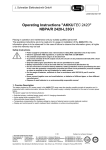
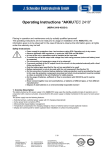
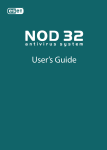
![Solaris LC40 [v04]](http://vs1.manualzilla.com/store/data/006347096_1-050cff7c0b4f91b9fb35d753454c0152-150x150.png)

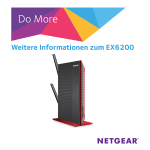
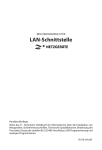
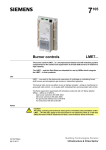
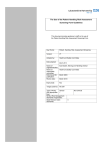
![[U4.92.11] Procédure ENGENDRE_TEST](http://vs1.manualzilla.com/store/data/006367543_1-7a8bc9bbf5b71ba531fd386dd19da1a3-150x150.png)
